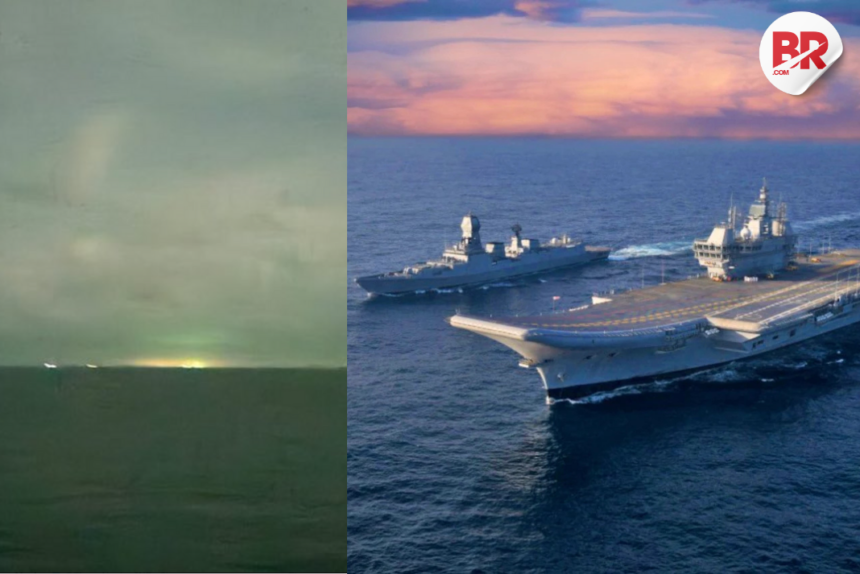
In a historic turn of events, the Indian Navy has launched a precision strike on Pakistan’s Karachi Port yesterday, marking the first naval offensive of this scale since the 1971 war.
Spearheaded by the indigenously built aircraft carrier INS Vikrant, the strike comes in response to a series of escalating cross-border attacks and rising hostilities from Pakistan.

According to Daijiworld and other credible sources, the Indian Navy launched multiple missiles—including BrahMos-class and Tomahawk-type precision weaponry—targeting key military and trade infrastructure in the region. The Karachi Port, which handles nearly 60% of Pakistan’s commercial trade and houses critical naval installations, suffered extensive damage.
Karachi Port Destruction.
further details awaited.#IndiaPakistanWar pic.twitter.com/AeYP35qmZA
— Ajit Doval ᴾᵃʳᵒᵈʸ🇮🇳 (@IAjitDoval_IND) May 8, 2025
Ports like Karachi and Ormara, both strategic outposts of the Pakistan Navy, were reportedly crippled by the assault, with visuals of large fires and secondary explosions flooding social media.
While the Pakistani government has yet to confirm the scale of damage, the images speak volumes.
For India, it’s not just about avenging provocations. It’s about rewriting the playbook. No more symbolic condemnations or empty warnings. This is 21st-century deterrence—Indian style.
Strategic Significance: Why Karachi Was the Bullseye
India’s choice of target was no accident. The Karachi Port isn’t just a logistics hub—it’s the beating heart of Pakistan’s economy and naval power. Destroying key parts of it doesn’t just hurt their supply lines; it cuts deep into Pakistan’s strategic confidence.
As reported by India Shipping News, the precision of this attack, executed by the Navy’s most advanced warship, highlights just how far India’s maritime capabilities have come.
INS Vikrant isn’t just a symbol of Atmanirbhar Bharat—it’s the floating embodiment of Indian power projection.
Tides Have Turned: Pakistan Can No Longer Hide Behind Proxies
For years, Pakistan has operated with impunity, sheltering terror groups while hiding behind denials and weak diplomacy. But this strike flips the script. India is not just calling their bluff—it’s cashing in the chips.
The operation also comes amid increasing military exercises in the Arabian Sea, signaling that India is ready for sustained maritime dominance if pushed further. The region watches as the two nations remain on alert, but this time, India is clearly setting the terms.
A Message from New India: We Don’t Just Talk Tough—We Act
This strike isn’t just about missiles. It’s about mindset. India is no longer waiting for permission to defend its people or its pride. It’s acting with clarity, courage, and conviction. And yes—Pakistan, take notes.
This high-stakes strike is more than retaliation—it’s a recalibration of South Asian security dynamics. A line has been drawn in salt water—and this time, India holds the pen.
Also Read Saudi Arabia Backs India’s Anti-Terror Stance as Jaishankar Meets Adel Aljubeir












